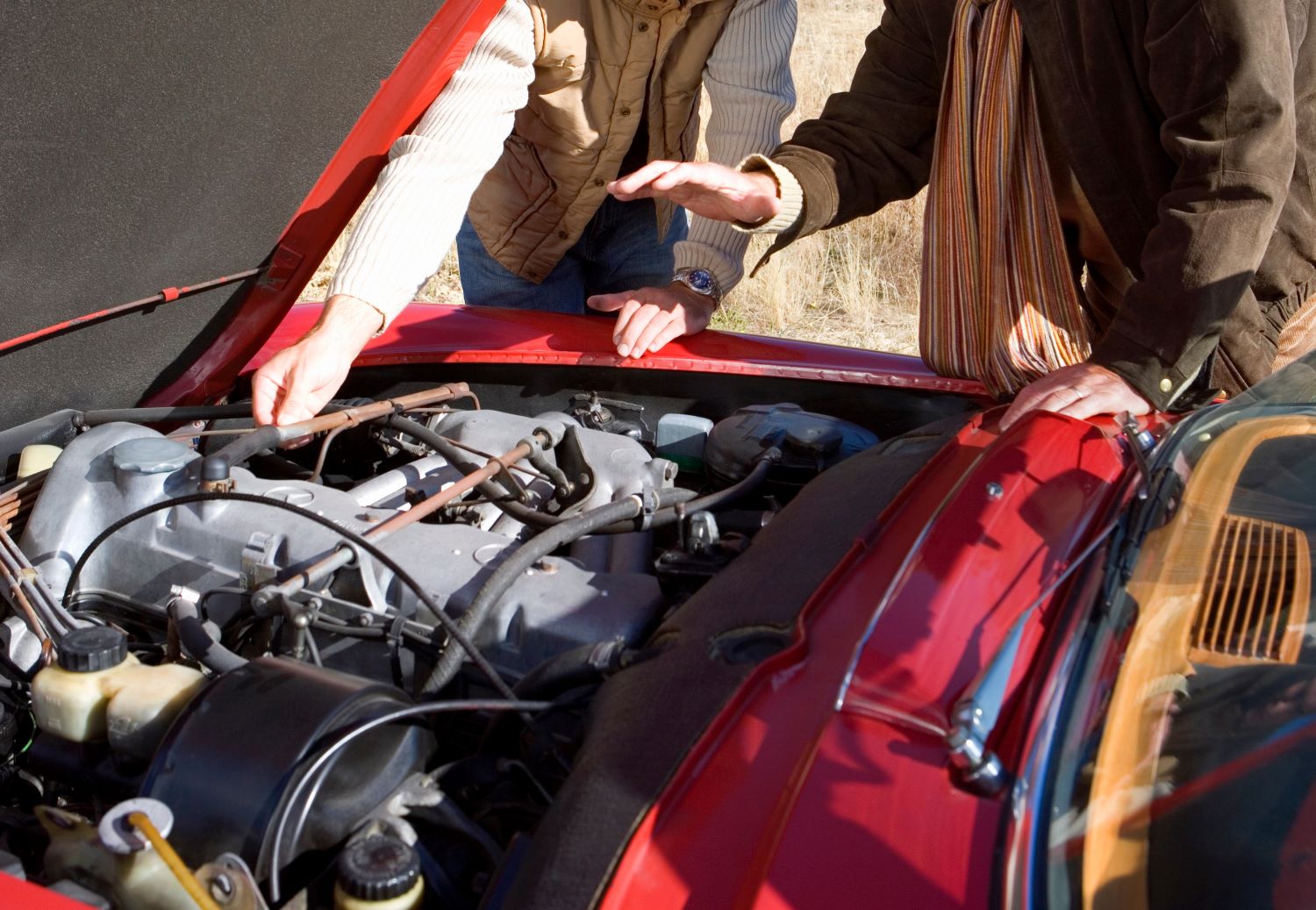Summer Road Trip Woes? Decoding Carburetor Vapor Lock

Is your classic car sputtering and stalling on hot days? You might be experiencing the frustrating effects of carburetor vapor lock. This issue, common in older vehicles with carburetors, can turn a pleasant summer drive into a roadside headache. Let's dive into understanding what causes this warm-weather woe and how you can keep your vintage ride running smoothly all season long.
Carburetor vapor lock occurs when the fuel within the carburetor or fuel lines prematurely vaporizes due to excessive heat. This creates gas bubbles that disrupt the normal flow of fuel to the engine, essentially starving it of the gasoline it needs to run. The result? Stalling, rough idling, and difficulty starting, especially after a hot soak. It's a bit like trying to drink a milkshake through a straw that's full of air bubbles—not very effective.
Back in the heyday of carbureted engines, vapor lock was a relatively common occurrence, especially during the scorching summer months. While modern fuel-injected cars are largely immune to this problem, understanding vapor lock remains important for classic car enthusiasts and anyone working with older machinery. This issue can be traced back to the inherent nature of carburetors and their reliance on a precisely balanced mixture of fuel and air. The rising temperatures under the hood can upset this delicate balance, leading to fuel vaporization and the troublesome symptoms of vapor lock.
Recognizing the indicators of carburetor vapor lock is crucial for swift diagnosis and rectification. The problem typically manifests itself through a series of performance issues, most notably difficulty starting a hot engine. You might notice your engine cranking but failing to ignite, or it may start briefly and then stall. While driving, the engine might sputter, hesitate, or lose power, particularly during acceleration or when idling in traffic on a hot day. A telltale sign is improved performance after the engine and fuel system have had a chance to cool down.
Several factors contribute to the likelihood of experiencing carburetor vapor lock. High ambient temperatures are the primary culprit, exacerbating the heat build-up under the hood. Low fuel levels can also contribute, as less fuel in the tank means a higher ratio of vapor to liquid, increasing the chances of bubble formation. Additionally, problems with the fuel system, such as a faulty fuel pump or restricted fuel lines, can further elevate the fuel temperature and contribute to vapor lock.
While vapor lock is primarily a nuisance, repeated occurrences can potentially lead to damage within the fuel system over time. Addressing the root causes is key to preventing these issues. One common solution is to insulate the fuel lines and carburetor to minimize heat absorption. Another approach involves ensuring proper ventilation under the hood to dissipate heat effectively. Using a fuel additive designed to prevent vapor lock can also be beneficial. In some cases, modifications to the fuel system, such as relocating the fuel pump or installing a fuel pressure regulator, might be necessary.
Advantages and Disadvantages of Addressing Carburetor Vapor Lock
| Advantages | Disadvantages |
|---|---|
| Improved engine performance and reliability in hot weather. | Can involve some cost and effort to implement solutions. |
| Prevents potential long-term damage to the fuel system. | Some solutions, like fuel additives, require ongoing use. |
| Enhances the overall driving experience, particularly during summer months. | May require some mechanical knowledge for more complex fixes. |
Frequently Asked Questions about Carburetor Vapor Lock:
1. What is carburetor vapor lock? Answer: Vapor lock is the formation of vapor bubbles in the fuel system of a carbureted engine due to excessive heat, disrupting fuel flow.
2. What causes vapor lock? Answer: High temperatures, low fuel levels, and fuel system issues can contribute to vapor lock.
3. How can I prevent vapor lock? Answer: Insulating fuel lines, ensuring proper ventilation, and using fuel additives are common preventative measures.
4. What are the symptoms of vapor lock? Answer: Difficulty starting a hot engine, sputtering, hesitation, and loss of power are typical symptoms.
5. Is vapor lock dangerous? Answer: While primarily a nuisance, repeated occurrences can potentially damage the fuel system over time.
6. How do I fix vapor lock? Answer: Allowing the engine to cool down often resolves the immediate issue. Addressing the underlying causes is crucial for long-term prevention.
7. Are modern cars susceptible to vapor lock? Answer: Modern fuel-injected cars are generally not susceptible to vapor lock.
8. What should I do if I suspect vapor lock? Answer: Pull over in a safe location, allow the engine to cool down, and check the fuel level. If the problem persists, consult a mechanic.
Tips and tricks for dealing with potential vapor lock include carrying a spray bottle of water to cool down the fuel lines and carburetor in emergencies, parking in shaded areas whenever possible during hot weather, and maintaining a proper fuel level in the tank. Monitoring your engine's performance and addressing any fuel system issues promptly can also help prevent vapor lock from occurring.
In conclusion, understanding carburetor vapor lock is crucial for anyone driving or maintaining a classic car. While not as common as it once was, this heat-induced issue can still cause significant frustration and potentially lead to long-term problems if left unaddressed. By recognizing the symptoms of carburetor vapor lock, understanding its causes, and implementing preventative measures, you can ensure smooth and enjoyable summer driving experiences. Don't let vapor lock put a damper on your road trip adventures! Keep your classic car running smoothly by addressing this issue proactively, and enjoy the open road with confidence.
The rise of non alcoholic wine a sobering trend
Understanding the gs pay scale in charleston
Sherwin williams golden honey paint deep dive













